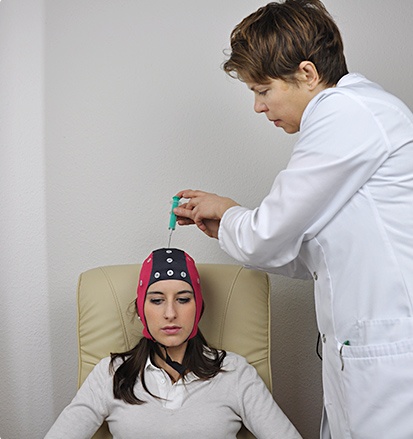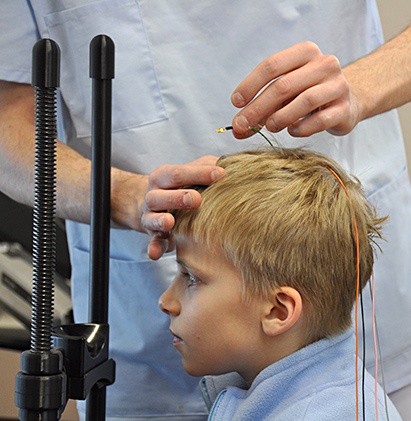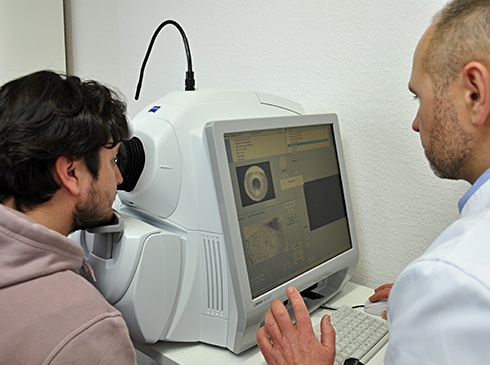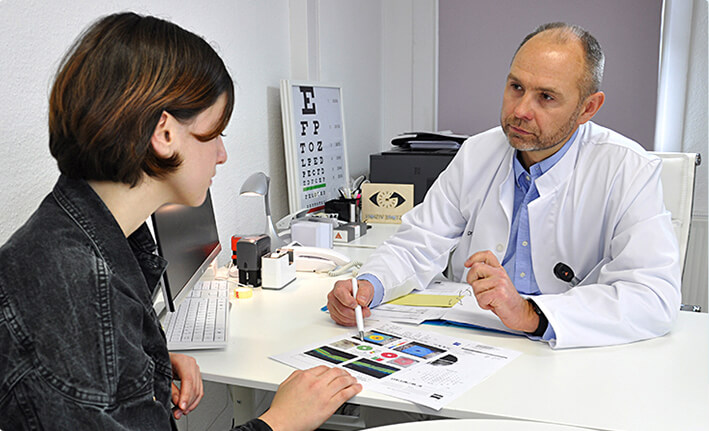In cases of vision deterioration caused by optic nerve and retinal diseases, such as plasticity of the vision system, intervention is strongly needed to restore vision. By decreasing the defects of visual fields or causing the enlargement of preserved areas of vision and increasing vision sharpness, we can promote a normal quality of vision. Such results can be achieved through therapeutic electrical stimulation that activates the retinal ganglion cells, improves the signal conductivity through visual pathways (including the optic nerve), and embodies the visual cortex reserves, resulting in an optimal, functional state of the whole brain and improving the vision system. Treatment by properly adjusted impulses (electric current therapy) focuses on non-invasive electrical activation of retinal neurons using impulses with different shapes and ranges through electrodes located around the eyes (periorbitally).
Retinal neurons have an important role in the working of the visual system. On one side of the brain, they get information using extensions, called axons, through the optic nerve, sending this information to the rest of the brain. On the other side, ganglion cells get signals from receptors (cones and rods), coding information on the environment.
From a practical point of view, the use of therapeutic electrical stimulation means picking optimal impulses that can create artificial visual effects such flickers, flashes or more complex light effects in the patients, thanks to the effect on retinal ganglion cells. Their existence is the result of the activation of cortical visual centers found in occipital lobes of both hemispheres. External electrical signals applied to the retina can cause functional activity in the visual cortex (prestriate area) located deep in the brain.
Activated neurons of visual centers can better analyze information received from the retina, which was reduced by optic nerve damage causing a weakening activating effect on ganglion cells. In turn, this creates conditions for vision improvement. Similarly, the photo camera matrix extends the diaphragm in low-light situations.
During the treatment process, the conduction visual pathways (optic nerves, tracts and central visual pathway) are activated both from the periphery by retinal ganglion cells and from the top by the neurons of the occipital cortex. The method of therapeutic electrical stimulation was developed by realizing that such organization of the visual system includes the interaction of center and periphery, cells and their axons, and forming a new connectivity between different parts of the brain.
Success of the treatment results is mainly because of the therapeutic electrical stimulation that creates plastic changes in the vision system. These changes mainly occur in the visual cortex, given that the functional abilities and plasticity of neurons of the visual cortex are much higher than that of lesioned, optic-nerve fibers or even damaged retinal neurons (first of all ganglion cells). This activates the vision centers, allowing for significant improvement of visual processing to happen. These results, combined with the activation of retinal ganglion cells, is the basis of getting the stable effects of partially or permanently restored vision.

















